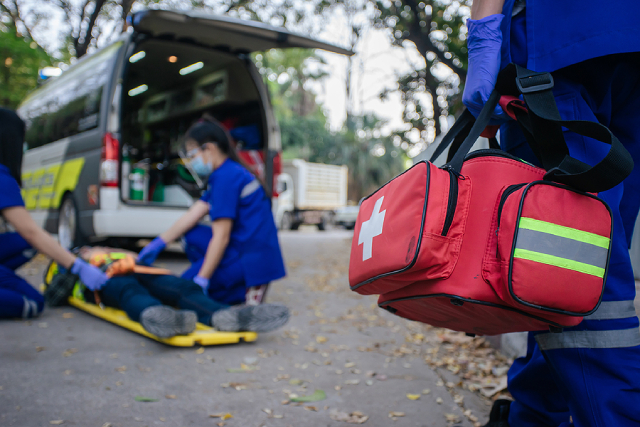4 Reasons RFID Benefits The Management Of Medical Devices

Needless to say, paramedics and all aspects of the healthcare industry are vital to society since they provide immediate medical assistance when there is a need. To reinforce this, hospitals almost always have their own ambulance so that they can quickly extend help beyond the walls of their establishment.
When ambulatory crews are in action, they need to always be alert and quick in evaluating the patient’s condition so that they can act accordingly and get the patient transported to the hospital – the sooner the patient gets medical attention, the sooner they will recover. During situations like this, the availability and condition of medical equipment are very important for ambulatory crews because these items helps them perform their jobs.
To guarantee the condition and consistent availability of medical equipment, effectively managing them is key. This is difficult as medical emergencies are naturally pressure-inducing, as equipment can either be misplaced, not re-stocked, placed inside another ambulance, or worse – left at the hospital.
If these errors take place, they can cripple the paramedic’s rescue operation. As such, it’s important to understand and be aware of how RFID enhances the management of medical devices.
Why RFID is an advantage for medical equipment management
When hospitals and other medical institutions choose to integrate RFID or Radio Frequency Identification technology, there are many advantages as it improves on many functionalities.
Locate items easily
RFID is an innovation that allows a quick reading and collection of specific data through the use of low-power radio waves. When an RFID tag is attached to a certain asset, an RFID reader, antenna, or transceiver can help locate it if it is misplaced.
Check the availability of essential equipment
The use of an RFID asset tracking system and tags can help perform a speedy check on the number of medical equipment, its inventory that is present inside an ambulance. This is important because this removes any delays in the healthcare industry.
In most cases, the pieces of medical equipment that are usually tagged are defibrillators, resuscitators, and suction units. If these pieces of equipment are tagged, the person can simply use the reader to quickly check that all necessary equipment is aboard the ambulance.
Allow for scheduled routine checks
Depending on how the software is programmed, RFID companies also allow their users to identify if there is any equipment that is due for routine checks or maintenance, through RFID technology.
Every time a person inspects the condition of certain medical equipment, RFID can take note when the last check was done and schedule the next check. This will ensure that all pieces of equipment will be thoroughly inspected so that the ambulatory crew will be equipped with fully functional assets.
Accurately categorise pieces of equipment
RFID can also help to identify which ambulance a certain piece of equipment belongs to. This promotes accountability as each medical equipment is identified to each ambulance, which subsequently also has its own corresponding paramedics.
If damage is found on a piece of equipment, one scan of its RFID tag can immediately help to identify the group of people who last used it.
Altogether, RFID technology helps to mitigate the probability of misplaced or missing assets, improves the quality control of every single piece of equipment, and promotes accountability.